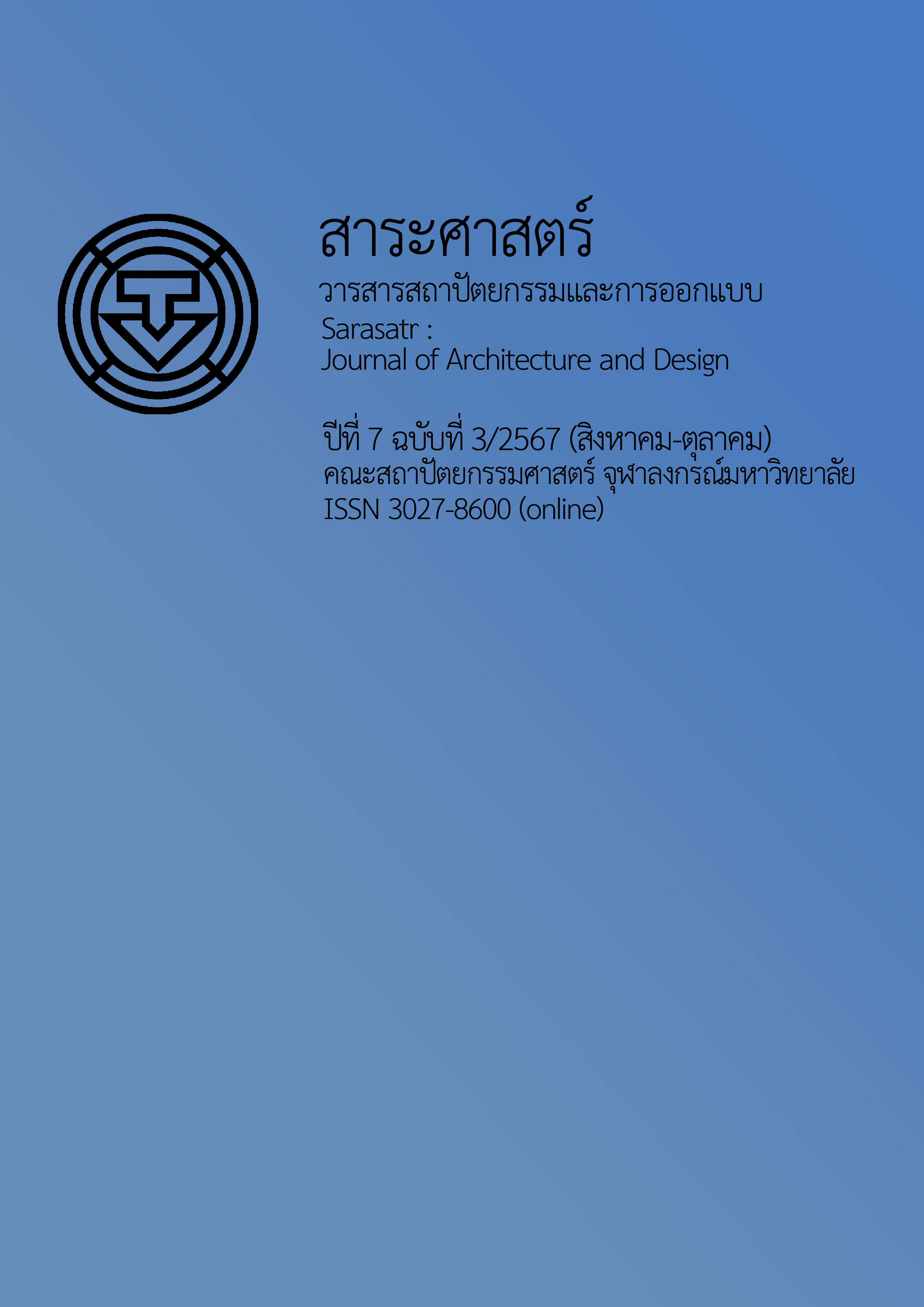Maintenance Management of Building Systems and Related Mechanical Systems in Automotive Service Buildings: A Case Study of 7 Automotive Service Buildings in Bangkok
Main Article Content
Abstract
Maintenance management of building systems and related mechanical systems plays a key role in supporting the core business of seven case studies of automotive service buildings. These buildings have distinct functional qualities depending on their primary missions, and work areas are created based on the nature of the work to ensure consistency. The size of the occupied building space is limited. Understanding the core functions of each building leads to efficient and successful maintenance management. This study focuses on maintenance planning and management, aiming to analyze the work plan and scope of work from building technicians and outsourcing. The study uses a case study method, conducting empirical research, document analysis, and interviews with the building management team. The data was then distributed to identify common traits and conduct a summary and discussion of the findings. The findings revealed that: 1) All seven buildings have distinct major activities: sales, car inspection and repair, four buildings include body and paint work, and three buildings exclude body and paint work. 2) Two technicians visit all seven buildings once a week to complete planned tasks and unplanned work. 3) Mechanical system maintenance roles are unclear between the service building mechanics and the central building technicians. 4) An outsourcing agency was hired to carry out system maintenance, but several systems were not covered in the maintenance program. 5) Oil is being drained, and there are storage areas for oil and hazardous materials. Paint work and storage rooms are also in place, necessitating increased fire safety precautions. 6) Procedures for the disposal of fire and health hazardous waste are in place. 7) Nearby buildings, such as commercial and residential structures, require consideration of noise, odor, and fire impacts. In conclusion, it is necessary to consider the safety of not only the building users but also the neighboring buildings, as part of social responsibility.
Article Details
References
กฏกระทรวง ฉบับที่ 55 (พ.ศ. 2543) ออกตามความในพระราชบัญญัติควบคุมอาคาร พ.ศ. 2522. (2543, 7 สิงหาคม). ราชกิจจานุเบกษา. เล่ม 117 ตอนที่ 75กหน้า 16-30.
ธงชัย ทองมา. (2553). การบริหารทรัพยากรกายภาพอาคารสำนักงานให้เช่าระดับ เอ : กรณีศึกษาอาคารสำนักงานให้เช่า จำนวน 15 อาคาร ในบริเวณศูนย์กลางเขตธุรกิจกรุงเทพมหานคร [วิทยานิพนธ์ปริญญามหาบัณฑิต, จุฬาลงกรณ์มหาวิทยาลัย]. CUIR. http://cuir.car.chula.ac.th/handle/123456789/36519
ธงชัย สัญญาอริยาภรณ์. (2551). การบริหารทรัพยากรกายภาพของโรงเรียนนานาชาติ : กรณีศึกษา 6 โรงเรียนนานาชาติในกรุงเทพมหานคร [วิทยานิพนธ์ปริญญามหาบัณฑิต ไม่ได้ตีพิมพ์]. จุฬาลงกรณ์มหาวิทยาลัย.
พระราชบัญญัติโรงงาน พ.ศ. 2535. (2535, 9 เมษายน). ราชกิจจานุเบกษา. เล่ม 109 ตอนที่ 44 หน้า 62-81.
พิสิฐพงศ์ บรรจงศิริ. (2555). การดำเนินงานดูแลบำรุงรักษาระบบประกอบอาคารประเภทอาคารศูนย์การค้า : กรณีศึกษา 4 อาคาร [วิทยานิพนธ์ปริญญามหาบัณฑิต ไม่ได้ตีพิมพ์]. จุฬาลงกรณ์มหาวิทยาลัย.
สิทธิพร อิสระศักดิ์.(2554). การทำงานบำรุงรักษาระบบประกอบอาคารโดยช่างประจำอาคารในอาคารขนาดใหญ่พิเศษ : กรณีศึกษา 5 บริษัทในอาคาร [วิทยานิพนธ์ปริญญามหาบัณฑิต ไม่ได้ตีพิมพ์]. จุฬาลงกรณ์มหาวิทยาลัย.
เสริชย์ โชติพานิช. (2553). การบริหารทรัพยากรกายภาพ : หลักการและทฤษฎี. สำนักพิมพ์แห่งจุฬาลงกรณ์มหาวิทยาลัย.
อภิชาติ นาควิมล. (2560). การพัฒนาระบบการจัดการบำรุงรักษาเครื่องจักรเพื่อลดการสูญเสีย [วิทยานิพนธ์ปริญญามหาบัณฑิต ไม่ได้ตีพิมพ์]. มหาวิทยาลัยธรรมศาสตร์.
Qureshi, A. U. (2020). Building the automobile operations-maintenance workstation structure. https://www.researchgate.net/publication/339723006_BUILDING_THE_AUTOMOBILE_OPERATIONS-MAINTAINENCE_WORKSTATION_STRUCTURE


